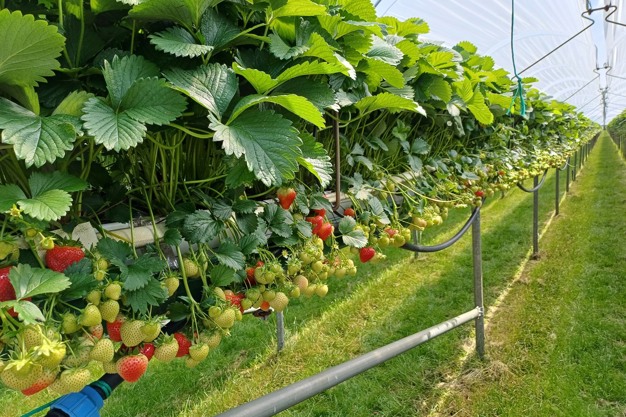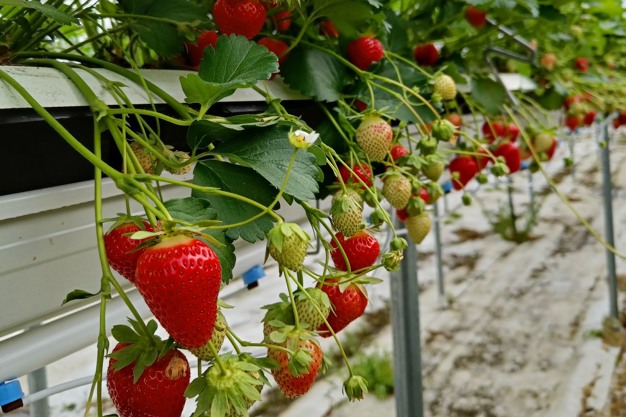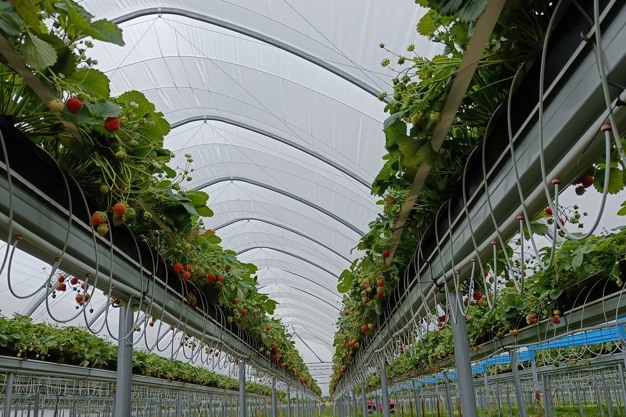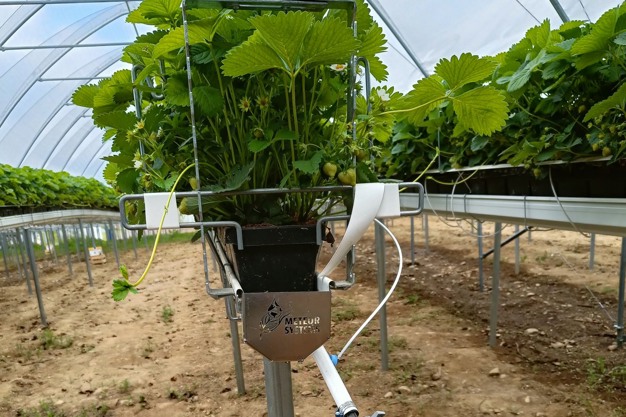Berry cultivation in Finland has undergone a major change in the last 10 years. Strawberries and raspberries, which are the most important crops, have largely moved to polytunnels. Eija Lankinen a lecturer in horticulture at Häme University of Applied Sciences and an independent consultant, specializing in berry cultivation explains: "There are many reasons for this, but in my discussions with farmers, one of the most important reasons is the weather protection provided by the tunnels, especially for the cultivation of strawberries and raspberries."

The tunnel cultivation season in Finland begins in March, when many farmers plant the first plantings in pre-cultivation rooms. It is common for nighttime temperatures to drop close to -10o Celsius even in early May, says Lankinen. "Using fleece covers to protect the flowers from frost is essential in both open fields and tunnels. Additionally, portable heating systems are used in tunnels. For example, the current spring has been extremely challenging. April and part of May were very cold. Early in the year, there was very little sunlight. In mid-May, the weather suddenly turned hot, and May ultimately had a record number of hot days, with a lot of radiation and hardly any rain."
She says for Finland's open field cultivation, the unusual weather phenomena often lead to uncertainty regarding the quality and quantity of the harvest. According to the Natural Resources Institute, the area of Finland's open-field cultivation has decreased with 300 hectares from 4163 ha in 2022 to 3794 ha in 2023. The area of strawberry tunnel cultivation had slightly increased from 2022, when the area was 71 ha, to 2023, when the area was 74 ha. The area of raspberry tunnel cultivation remained the same in 2022 and 2023, at 38 ha.

"The sale of berries slows down significantly with the start of the school year in mid-August. During this month, the amount of light decreases significantly, and the nights become cooler. In Finland, the berry season is mostly over by early October," states Lankinen.
Challenges of Finnish berry production
"Pests, pathogens, and the availability of labour are universal problems. Increased production costs have added pressure for price increases across all production inputs. Regarding pests, biological control methods and expertise have become increasingly important as the range of pesticides diminishes year by year. The most significant crop losses in strawberries are caused by thrips and spider mites, while aphids can reduce yields in raspberries. Different seasons may bring surprises as well; for instance, this year, strawberry-blossom weevil caused significant yield reductions locally in both strawberries and raspberries, especially during the spring. On the other hand, Finland's cold winter reduces the occurrence of many diseases and pests," explains Lankinen.

She further states that in some years, weather conditions can significantly affect the occurrence of fungal diseases such as powdery mildew and grey mould. "Climate control and timely preventive measures usually keep fungal diseases in check. Root diseases can sometimes cause yield reductions. Preventing them relies on cultivation hygiene, clean planting material, and irrigation strategies. Labour availability issues have been a growing problem for several years, and it does not seem that the challenges will decrease in the future. Therefore, farms need to make their production more efficient and carefully consider their labour needs well in advance."

Local consulting services to support Finland's soft fruit farmers
Lankinen says due to the many changes in Finnish berry farming over the past ten years, new cultivation techniques have required a lot of learning, and many farms have had to learn the hard way.
"Advisory services are often purchased from countries like the Netherlands, where horticultural expertise is known to be exceptional. Unfortunately, there is still a shortage of domestic advisory services. I have been working as an advisor officially for almost two growing seasons. Every farm visit is highly educational. Growing seasons are never the same. A significant advantage is that, as a local advisor, I can visit the farms weekly and thus see the entire growing season on-site. Finnish soft fruit growers are usually well-educated and have quite advanced cultivation methods," concludes Lankinen.
For more information:
Eija Lankinen
Häme University of Applied Sciences
Tel: +35 8505944114
eija.lankinen@hamk.fi
